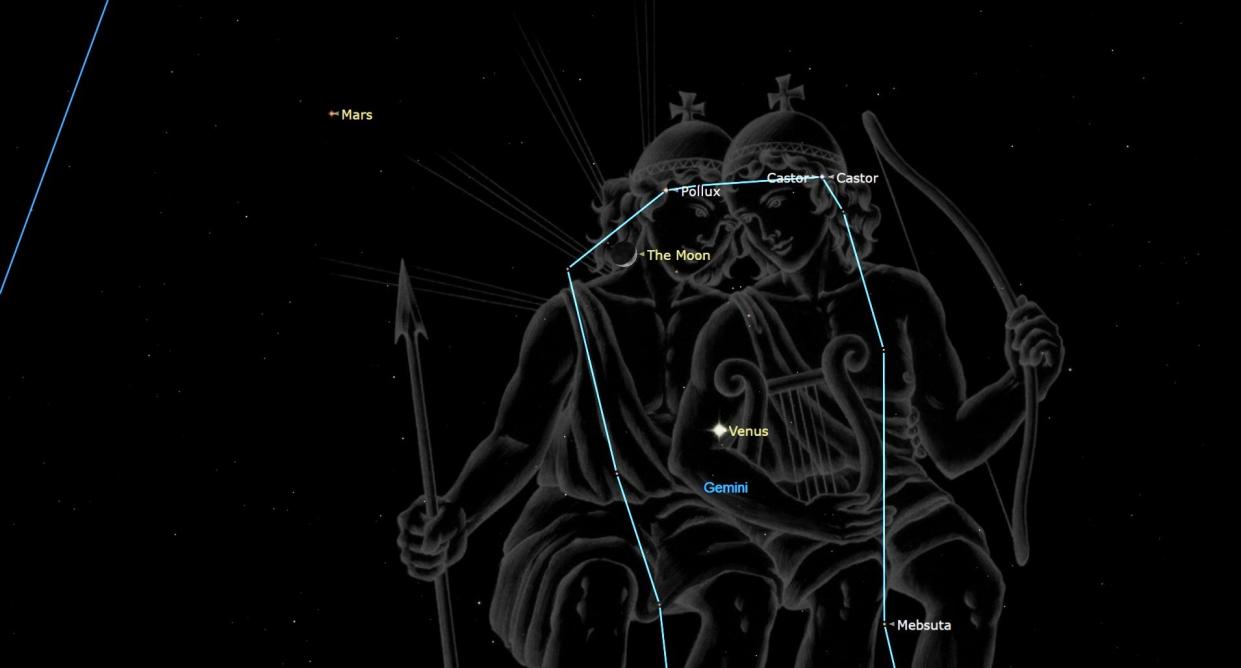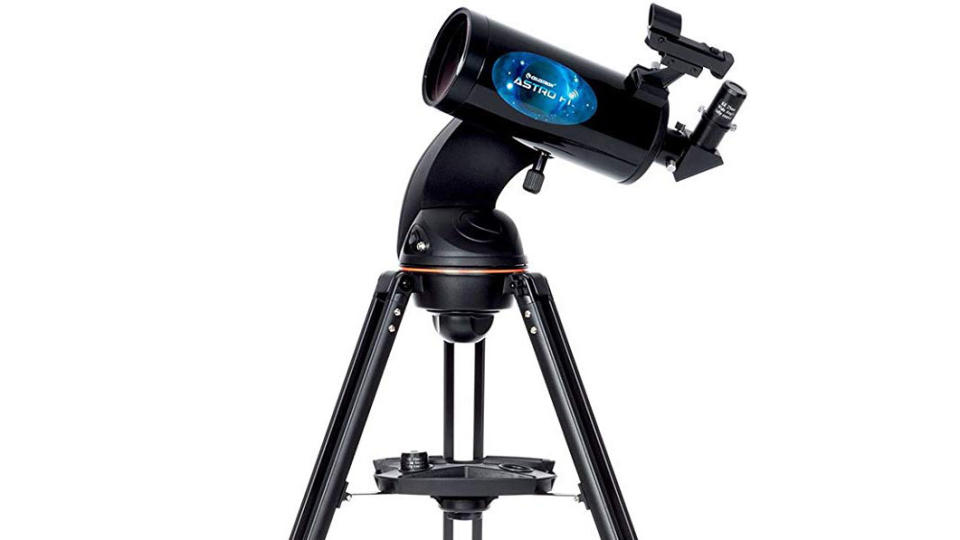See the crescent moon have a close encounter with Mars tonight

The moon and Mars will put on a show for skywatchers for the next two nights.
On Wednesday (May 24), the moon and Mars will reach their closest approach, called an appulse, as well as a conjunction, which is when they share the same right ascension (the celestial equivalent of longitude). That means you'll be able to see them close together in the night sky.
While the exact moment of appulse is 3:19 p.m. EDT (1919 GMT) and the exact moment of conjunction is 1:33 pm EDT (1733 GMT) on Wednesday, according to In the Sky, both the moon and Mars will be most easily visible at night. More specifically, the best time to observe the duo is either tonight or Wednesday night, before roughly midnight or 1 a.m., which is roughly when the two bodies will set (the exact timing depends on your location).
Related: What you can see in the sky tonight [maps]
At the time of appulse and conjunction, the moon will be five days old, so it'll be a waxing crescent. Mars will be located just 3 degrees and 39 minutes away from the moon at their closest approach — that's close enough to see them both together within the field of view of binoculars. (Your clenched fist held at arm's length covers about 10 degrees of sky.)
Though the two celestial bodies will appear to be close together from the vantage point of Earth, they're actually approximately 180 million miles (290 million kilometers) apart.
In order to find the moon and Mars in the night sky, look toward the constellation Cancer — though you're probably capable of spotting Earth's nearest neighbor without any help.
TOP TELESCOPE PICK:

Want to get a good look at the night sky? We recommend the Celestron Astro Fi 102 as the top pick in our best beginner's telescope guide.
RELATED STORIES:
— What is the moon phase today? Lunar phases 2023
— Full moon names for 2023 (and how they came to be)
— Night sky, May 2023: What you can see tonight [maps]
If you want to get a closer look at the moon and Mars tonight and Wednesday, take a look at our guides to the best telescopes and best binoculars. And if you want to photograph the pair, we have tips for how to photograph the moon, as well as guides to the best cameras for astrophotography and best lenses for astrophotography.
Editor's Note: If you snap an image of the conjunction between the moon and Mars and would like to share it with Space.com's readers, send your photo(s), comments and your name and location to spacephotos@space.com.
Follow Stefanie Waldek on Twitter @StefanieWaldek. Follow us on Twitter @Spacedotcom and on Facebook.

